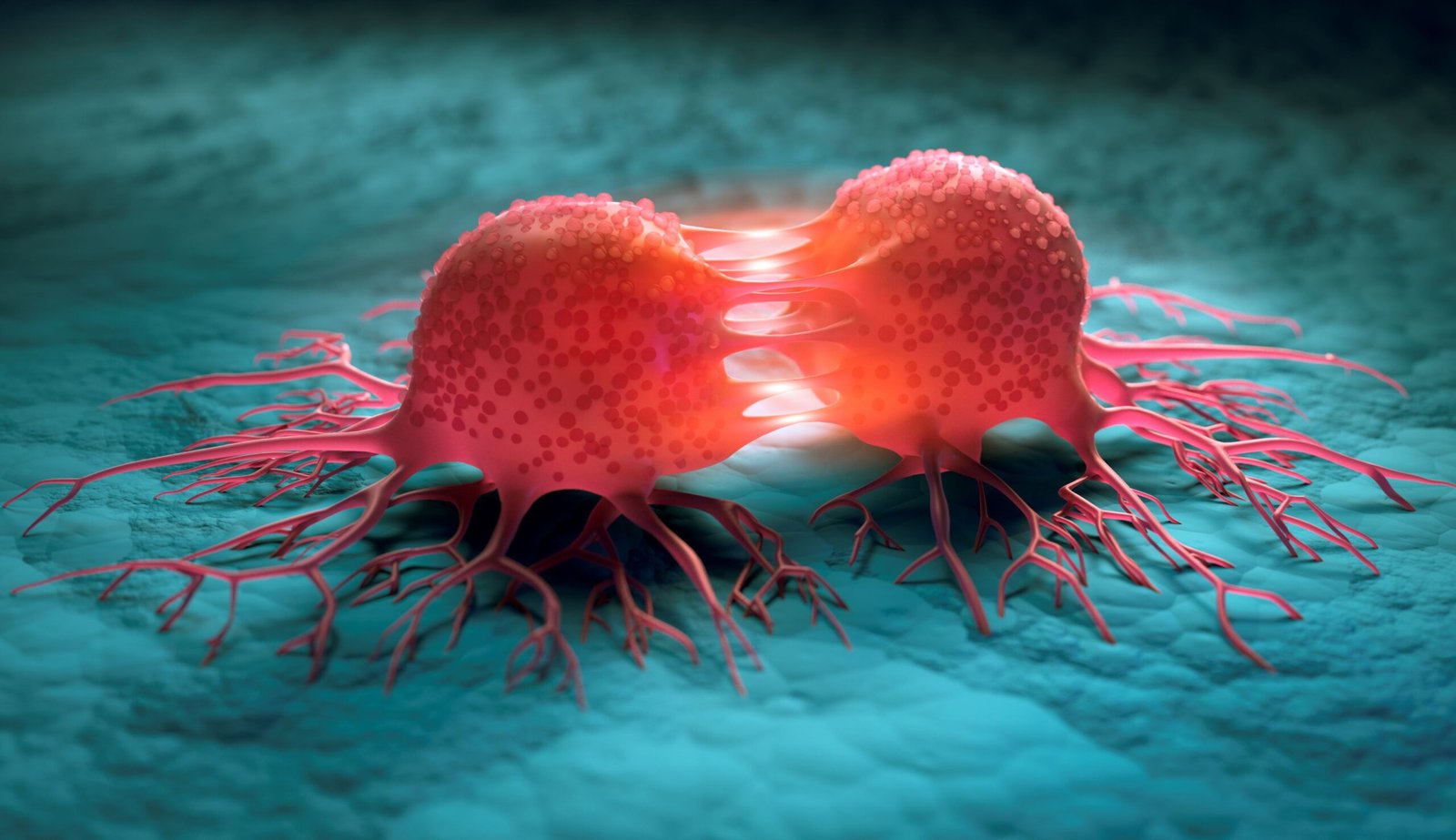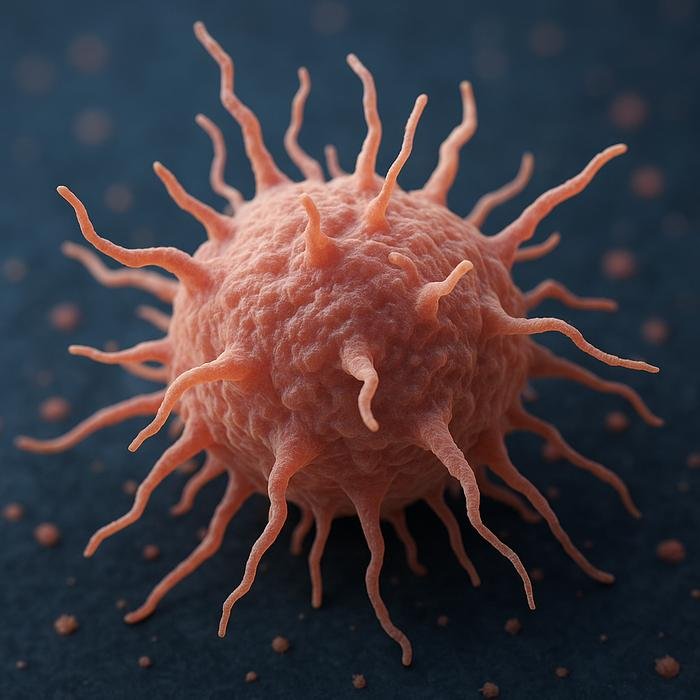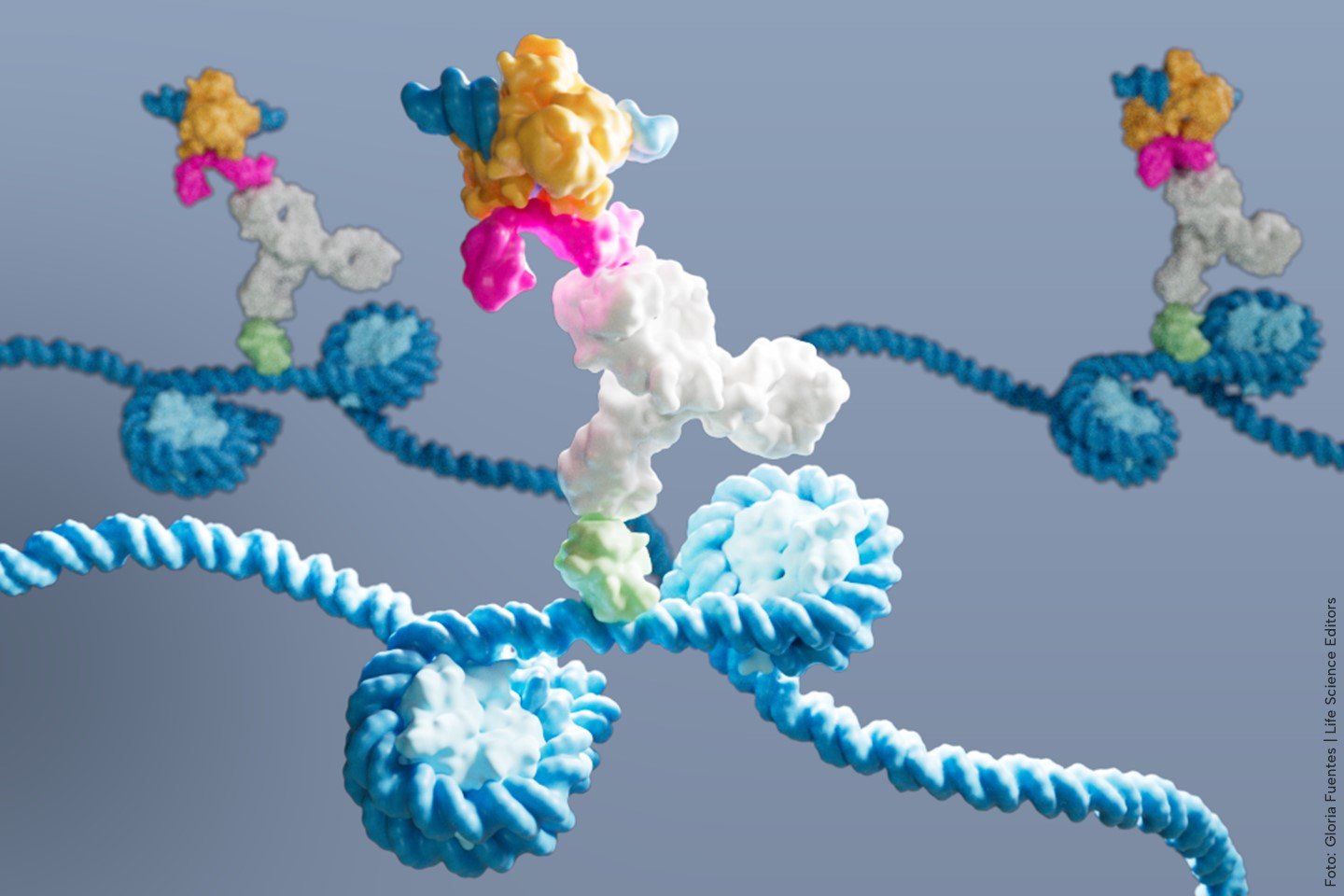Cancer cells undergo physically constraining processes, such as intravasation, extravasation, and tissue infiltration, that lead to acute mechanical stress. How mechanical confinement rewires the localization of organelles and affects cellular metabolism is largely unknown. Understanding this mechanism could lead to new strategies to control cancer metastasis.
In a new study published in Nature Communications titled, “Mitochondria-derived nuclear ATP surge protects against confinement-induced proliferation defects,” researchers from the Centre for Genomic Regulation (CRG) in Barcelona have found that cellular confinement induces rapid localization of mitochondria to the surface of the nucleus, which then leads to a nuclear ATP surge. These elevated nuclear ATP levels facilitate changes in chromatin accessibility, which are required for efficient DNA damage repair signaling and proper cell cycle progression of cells in the S-phase. The results suggest a physiologically relevant phenomenon in patient-derived tumors.
“It forces us to rethink the role of mitochondria in the human body. They aren’t these static batteries powering our cells, but more like agile first responders that can be summoned in emergency situations when cells are literally pressed to the limit,” said Sara Sdelci, PhD, group leader at CRG and co-corresponding author of the study.
To identify the redistribution of proteins between the nucleus and cytoplasm, the authors performed a proteomics-based subcellular fractionation of acutely confined cells and found strong enrichment of mitochondrial proteins in the nuclear fraction. This nucleus-mitochondria proximity is achieved by an endoplasmic reticulum-based net that entraps the mitochondria in an actin-dependent manner. Quantitative live cell microscopy confirmed that mechanical cell confinement led to a rapid re-localisation of mitochondria to the surface of the nucleus in vitro.
Notably, mitochondrial localization caused structural changes in the nucleus, termed Nucleus-Associated Mitochondria (NAM), that were observed in 84% of confined HeLa cancer cells. Cells treated with latrunculin A, a drug that dismantles actin, experienced a collapse of NAM formation and a lowering of ATP.
To confirm relevance for disease, the researchers examined breast‑tumor biopsies from 17 patients. NAMs appeared in 5.4% of nuclei at invasive tumor fronts versus 1.8% in the dense tumor core, indicating a three‑fold difference. “Seeing this signature in patient biopsies convinced us of the relevance beyond the lab bench,” said Ritobrata Ghose, PhD, postdoctoral researcher at CRG and co-first author of the study.
According to Verena Ruprecht, PhD, group leader at CRG and co-corresponding author of the study, “mechanical stress responses are an underexplored vulnerability of cancer cells that can open new therapeutic avenues.” Drugs that disrupt NAM formation may be able to decrease cancer metastasis without poisoning mitochondria or healthy tissues.
Taken together, the authors emphasized that this NAM ATP surge is likely a universal phenomenon in biology. Immune cells squeezing through lymph nodes, neurons extending branches, and embryonic cells during morphogenesis all experience similar physical forces.
“Wherever cells are under pressure, a nuclear energy boost is likely safeguarding the integrity of the genome,” said Sdelci. “It’s a completely new layer of regulation in cell biology, marking a fundamental shift in our understanding of how cells survive intense periods of physical stress.”
The post Confined Cancer Cells Undergo Nuclear ATP Surge, Unlocks Therapy Target appeared first on GEN – Genetic Engineering and Biotechnology News.




